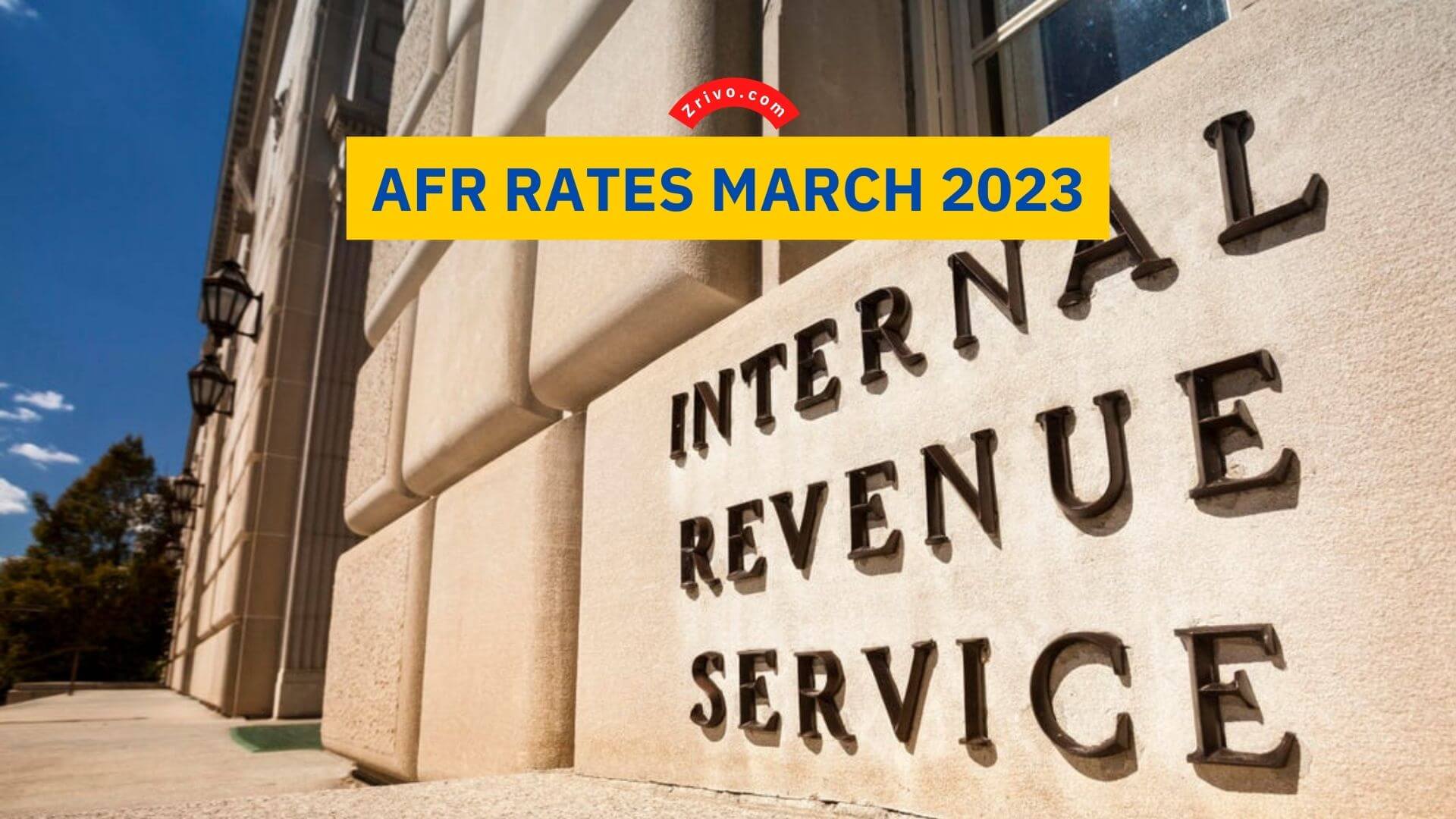AFR Rates March 2023

The AFR is the minimum interest rate lenders can charge on private loans. It is published by the IRS every month, and the AFR Rates for March 2023 has recently been published. AFR rates vary based on the loan term and the compounding frequency. They are also subject to flexibility due to market conditions.
AFR Rates are split into short-term AFRs, mid-term AFRs, and long-term AFRs. If a lender charges an interest rate that is less than the relevant AFR, the Internal Revenue Service may impose imputed interest. This is because the IRS assumes that the lender received a lower rate than they actually did for their loan, which will add to their income when filing their taxes.
According to the IRS, the AFR is used to determine the original issue discount, unstated interest, and income tax consequences of below-market loans. It’s also helpful in determining the tax implications of gifts and charitable remainder trusts.
How Do AFR Rates Work?
The AFR (Applicable Federal Rate) is a good place to start your search for the best interest rate on your next loan. These monthly rates are the minimums lenders must charge to stay competitive in a competitive lending market. There are many reasons to consider these rates as a part of your loan strategy. One of the most significant is that they can help you determine what type of collateral you may need to borrow against and what type of loan you should be looking for.
Another reason to consider these rates is that they can give you a heads-up on when interest rates are about to rise or when they are likely to fall. You can use these numbers as a benchmark to determine which types of loans should be considered for financing your next venture or which ones to avoid at all costs. The loan is considered income when a lender charges an interest rate above the AFR. That means that if you’ve made a personal loan or given someone else money, you’ll need to file Form 1040 to report the interest earned on loan.
It’s also a good idea to document the loan terms when you lend a family member money, even if it’s at a below-market interest rate. Doing so will ensure that you can claim the original issue discount and the gift tax on any money you’ve given a loved one without paying any tax. AFRs are especially important if you’re using the funds to purchase a home or refinance an existing mortgage. Since the AFR is several points lower than what you can get from banks or credit unions, a borrower who uses an intrafamily loan can save on interest payments over the life of the loan.

How to calculate AFR Rates?
In addition to these AFR rates, the IRS also publishes a number of other prescribed rates for different conditions. These rates include key rates that vary by compounding period and others that are based on term, maturity, or other criteria. Using the right rate to value a deferred gift is one of the most important parts of wealth transfer and estate planning. Using the appropriate table can reduce or eliminate tax complications in transferring assets to beneficiaries when a donor uses the appropriate table.
AFR rates are calculated based on the average yields on marketable debts published by the Internal Revenue Service each month. They are used to determine the original issue discount, unstated interest, gift tax, and income tax consequences of below-market loans.
The IRS uses AFR rates to monitor market compliance and to determine the original issue discount, unstated, and income tax implications of below-market loans. Lenders who charge an interest rate that is below the AFR may be subject to penalties or taxes, and borrowers who accept a loan at a low AFR rate are deemed to have defied the IRS’s rules.
What is the AFR Rates for March 2023?
Short-Term AFR Rates
| Month | Year | Annual | Semiannual | Quarterly | Monthly |
| January | 2023 | 4.50% | 4.45% | 4.43% | 4.41% |
| February | 2023 | 4.47% | 4.42% | 4.40% | 4.38% |
| March | 2023 | 4.50% | 4.45% | 4.43% | 4.41% |
Mid-Term AFR Rates
| Month | Year | Annual | Semiannual | Quarterly | Monthly |
| January | 2023 | 3.85% | 3.81% | 3.79% | 3.78% |
| February | 2023 | 3.82% | 3.78% | 3.76% | 3.75% |
| March | 2023 | 3.70% | 3.67% | 3.65% | 3.64% |
Long-Term AFR Rates
| Month | Year | Annual | Semiannual | Quarterly | Monthly |
| January | 2023 | 3.84% | 3.80% | 3.78% | 3.77% |
| February | 2023 | 3.86% | 3.82% | 3.80% | 3.79% |
| March | 2023 | 3.74% | 3.71% | 3.69% | 3.68% |





